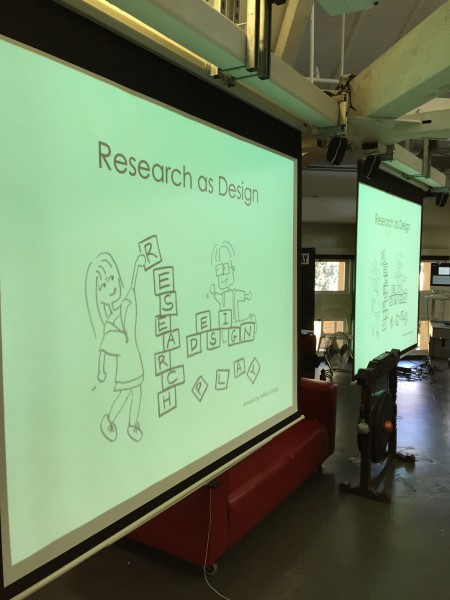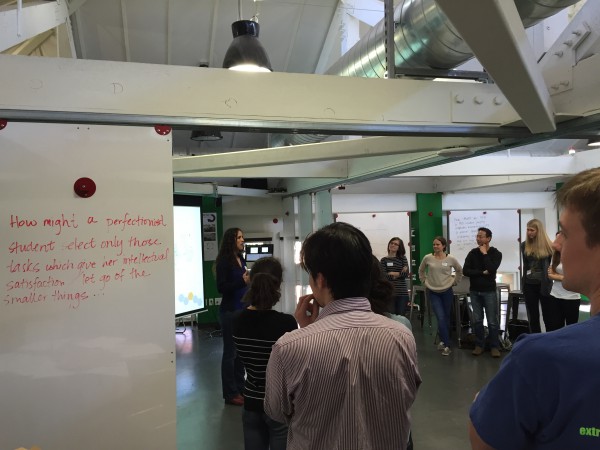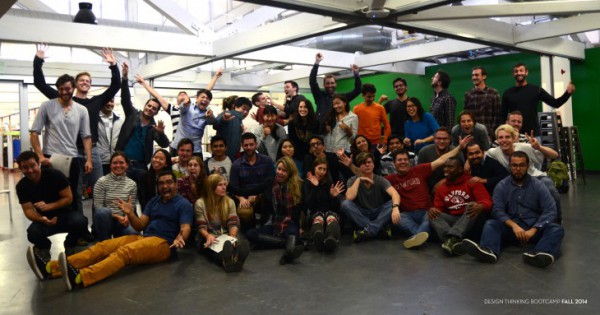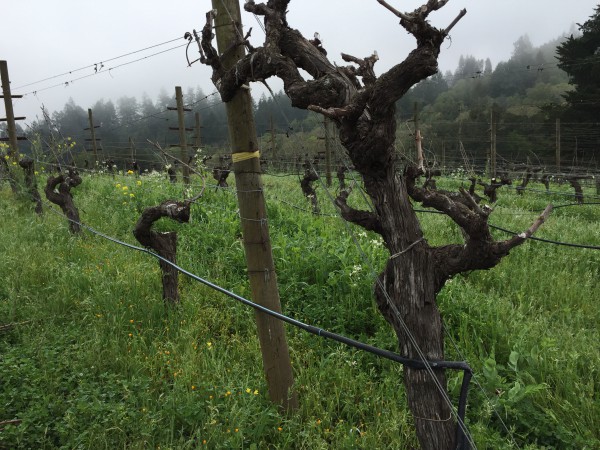
The second class of “Research as Design” begins. The class explores the application of design thinking in professional research. (Emi Kolawole)
Can design thinking help people do better research and better science?
Enter the d.school pop-up class “Research as Design: Redesign Your Research Process“, which was taught this past winter. The class provides PhD candidates, post-doctoral researchers, master’s degree candidates, faculty and others engaged in professional research at Stanford an opportunity to learn how they may apply design thinking to their work.
The instructors seek to help their students discover needs and explore potential solutions to problems in their research efforts. Prior to the class, I spoke with Amanda Cravens, a collaborative technology specialist and researcher at Stanford Law School. Along with the other members of the class’s teaching team, Nicola Ulibarri, Anja Svetina Nabergoj and Adam Royalty, Amanda has been conducting research around the role design thinking could play in the world of long-form research (PDF).
A problem of one and many
“Research is very much an individual problem, especially for PhD students,” Amanda told me. The goal of the class is to make finding the solution to that individual problem a collaborative effort.
The class explores the larger question of how this population’s emotional needs might be understood and addressed. It’s a change from the common approach, which is to take care of people’s mental health needs individually and separate from their research.
Amanda and I agreed that I should sit in on a class to see how they teach design thinking to this community. I agreed, fascinated by the idea of paving a vibrant and dynamic pathway to creative agency in the world of graduate research — a world I had come to see as overly constrained and staid.

Students listen to a mini-lecture during class. (Emi Kolawole)
I arrived to a full classroom of academics in a variety of fields, including biology, robotics and environmental science. Each d.school class must have a mix of students from a variety of disciplines. This class had that, but it also had a common thread in that everyone in the class was involved in research in some way. Students from the law school, business school and engineering school may have been different in their pursuits, but they had a natural point of empathy: the challenge of research. That commonality made for a unique class environment — one where empathy was almost automatically present from the beginning.
Solving someone else’s research challenge may, in fact, mean solving your own. Continue Reading
















